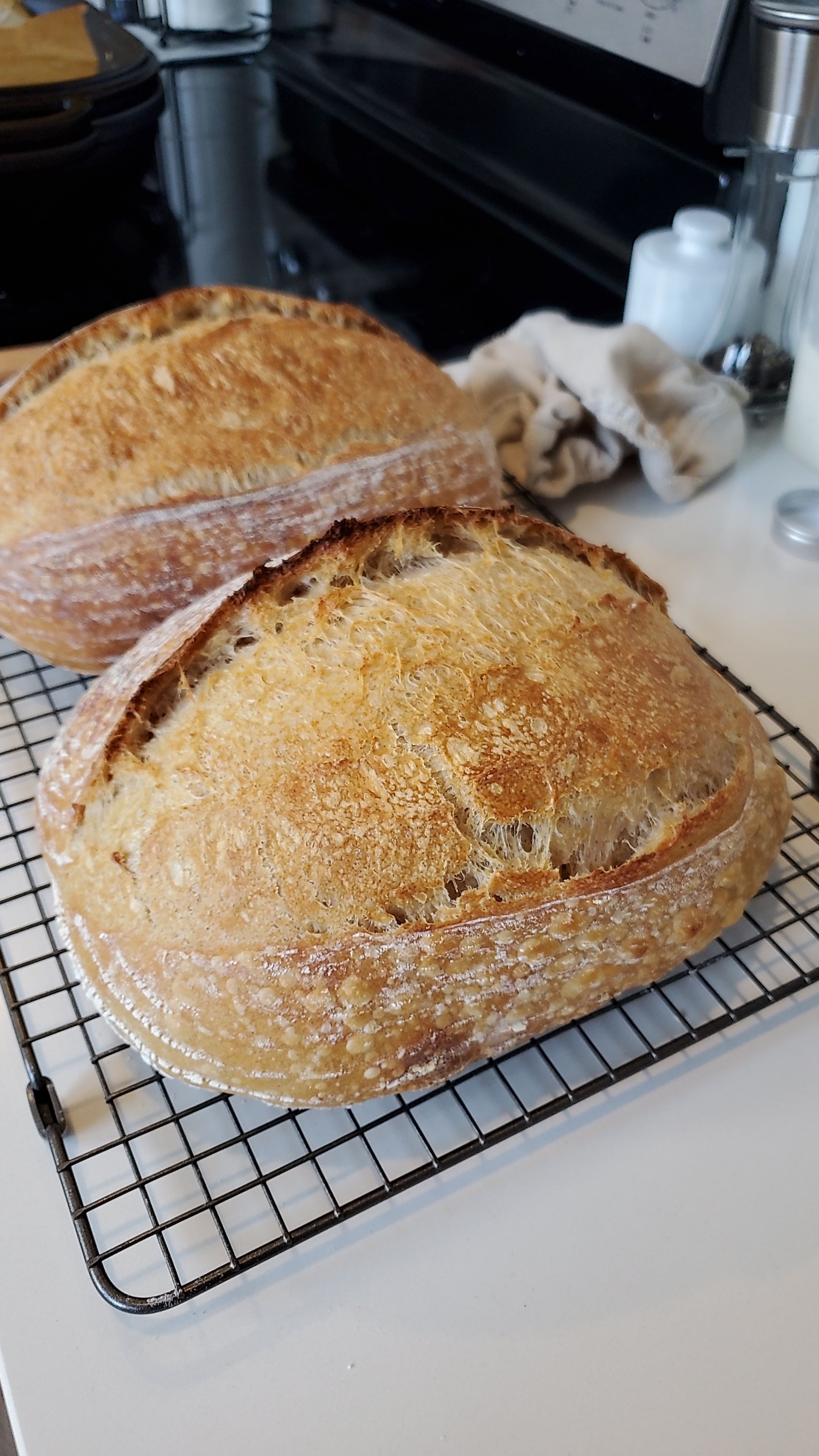
I’ve built up my own sourdough workflow that allows me to get tangy, high quality loaves in 12 hours instead of 24-36 hours, with all of the kitchen time condensed to the first 3 hours. It’s not the most basic recipe, but being able to decide if I want bread in the morning after I finished dinner is a level of flexibility that I haven’t found with other techniques.
More pics of loaves done with this workflow:







I am going to write a long form post/video explaining the steps I use with lots of data points, but at its core this is a 75% hydration Tartine country loaf.
What I think makes my process different my order of operations. I build the gluten network first via autolyze and fermentolyze steps, then build flavor by promoting the growth of lactic acid bacteria so that it outpaces the speed at which the yeast multiplies (dough temps as high as 100°F).
I have to stop that flavor buildup before the gluten network dissolves and the loaf over ferments, but once it’s sufficiently acidified I’m basically waiting for the bread to rise like any commercial yeasted recipe.
I am currently using a 9 hour cold retard @ 40°F to stop the acidification and raise the dough at the same time, but I’ve got a feeling that is longer than what’s actually necessary since the dough reaches temps that make the starter inert around 6 hours in. Since commercial breads can rise in like 4 hours in cold temps, I think there’s further optimization that can be done here, but I’m not waking up at 3 AM to bake bread anyway.
I’m really looking forward to this. I only bake occasionally, but I have a friend who bakes as a hobby and I’d love to share this with her.